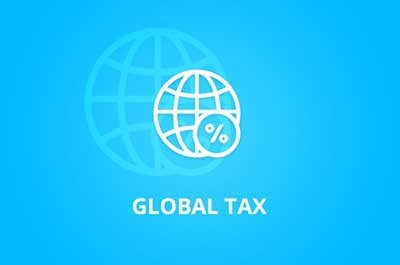Date: 01/03/2023
Relevance: GS-3: Indian Economy and issues relating to planning, mobilization of resources, growth, development and employment.
Key Phrases: Digital Services Tax, International tax system, Organisation for Economic Co-operation and Development (OECD), UN Model Tax Convention, Global Anti-Base Erosion (GloBE), Global Minimum Tax Rate
Why in News?
- Finance ministers and central bank chiefs from G20 nations, officials from other nations and multilateral agencies have recently debated about reforming the global tax architecture to stop cross-border tax avoidance by MNCs.
What Does Global Tax Reform Seek?
- The goal is to prevent multinational businesses (MNCs) from using tax regulations that are designed for a traditional brick-and-mortar industry to artificially shift earnings from the place where their consumers are to a low- or no-tax jurisdiction.
- The reform seeks to modify the regulatory architecture to prevent two
things:
- Arrangements by MNCs to recognise profits in the lowest taxed jurisdictions.
- A ‘race to the bottom’ by individual governments to attract investments with lower tax rates
- As per the latest count, 142 nations have agreed to the reform.
Pillars Of Global Tax Reforms:
- Re-allocation of parts of the profits of large MNCs:
- It seeks to re-allocate part of the profits of large MNCs above a specified threshold for taxation in countries where their customers are.
- This would help countries like India to get a slice of such profits through taxes.
- GloBE proposal:
- It recommends a global minimum corporate tax rate of 15% and ways to ensure that MNCs pay up this minimum level of tax on income arising in each of the markets where they operate.
- It also proposes a ‘top-up tax’ on profits in any market whenever the effective tax rate falls below 15%.
What is the Global Minimum Tax Rate?
- The global minimum corporate tax rate, abbreviated GMCT or GMCTR, is an agreement between national leaders which proposes to reduce tax competition between countries and the avoidance of corporate taxes by setting a world-wide minimum corporate tax rate.
- The global minimum tax attempts to limit tax competition by introducing a globally uniform floor, below which the effect of low tax rates or fiscal policy measures would be largely obviated.
- The OECD published detailed rules to assist in the implementation of a landmark reform to the international tax system, which will ensure Multinational Enterprises (MNEs) will be subject to a minimum 15% tax rate from 2023.
- The Pillar Two model rules provide governments a precise template for taking forward the two-pillar solution to address the tax challenges arising from digitalisation and globalisation of the economy agreed in October 2021 by 137 countries and jurisdictions under the OECD/G20 Inclusive Framework on BEPS.
- The rules define the scope and set out the mechanism for the Global Anti-Base Erosion (GloBE) rules under Pillar Two, which will introduce a global minimum corporate tax rate set at 15%.
- The minimum tax will apply to MNEs with revenue above EUR 750 million and is estimated to generate around USD 150 billion in additional global tax revenues annually.
How Will India Benefit?
- Pillar one is more relevant to India where large western tech giants have a market.
- Taxing rights on about $200 billion in global profits of companies will boost revenue.
- The part that will come to India will replace its unilaterally imposed equalisation levy on online advertisements and e-commerce supplies by non-resident firms.
- Receipts from the equalisation levy has never crossed $1 billion annually.
Is The Reform Close to Becoming Reality?
- For it to become a reality, nations have to sign a legally binding multilateral convention.
- As per the G20 Chair’s outcome document, world leaders will continue cooperation for a fair and modern tax system and that the treaty could be signed in the first half of 2023.
- As per OECD’s report to G20, the idea of a global minimum tax is now becoming a reality, with all EU members, the UK, Switzerland, Japan, Korea and Singapore moving legislation in this regard.
What Are The Challenges?
- Given that work on the global tax reform started back in 2013, it remains to be seen how quickly world leaders could sign a legally binding treaty. ● Businesses wouldn’t want a complex tax to add to their regulatory burden.
- Negotiations are still on regarding the global minimum tax rate.
- Tax authorities in developing countries need to develop regulatory capacity for administering complex tax rules.
- For MNCs, the changes are set to impact how they recognise profits and costs in financial statements.
Source: Live-Mint
Mains Question:
Q. Discuss the need as well as the challenges associated with the implementation of the global tax deal proposed recently. How will it be beneficial for India? (250 words).






















